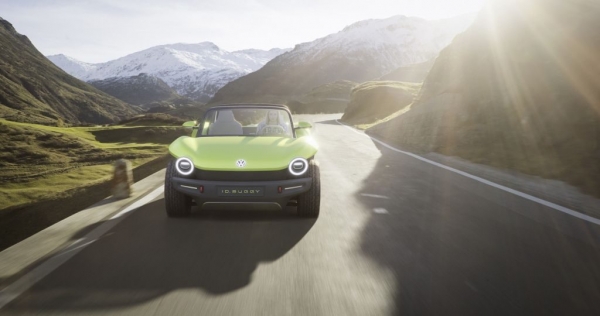24.4.2019. In the case of the same vehicle models with different drive, the carbon footprint of the battery-powered E-variants already better than that of the corresponding vehicles with a combustion engine. In addition, the E-vehicles are a further high CO2 offer the potential for savings in all phases of the product cycle.
Of crucial importance for the CO2 emission, in addition to this, if the drive energy from fossil or renewable sources. This was the result of a certified “Life-Cycle Assessment” (LCA), the Volkswagen Golf, which compares the CO2 emissions of the different vehicle versions, with the electric motor and the internal combustion engine.
Content
- Carbon dioxide Emission when the electric vehicle is lower
- “Life Cycle Assessment” as a tool for the holistic analysis
- Further lowering of the CO2 emissions in all product stages planned
Carbon dioxide Emission when the electric vehicle is lower
In summary, the Emission of an average of 140 g CO2/ km is obtained for the current Golf TDI (Diesel) over the entire life cycle, while the e-Golf attains a value of 119 g CO2/km.
It is clear that the vehicle with the internal combustion engine, most of the emissions during the use phase, that is, arise in the provision and combustion of fossil fuel.The Diesel achieves 111 g of CO2/km. A vehicle with E-drive emittiertin this Phase, only 62 g CO2/km, resulting solely from the provision of electricity.
During the usage phase, the CO2 emission of the sources depend on the energy production. You fall, the stronger, the more renewable energies are available. In contrast, the focus of the emissions from the battery-powered electric vehicle in production. According to LCA, a Diesel comes here to 29 g CO2/km, while for a comparable electric vehicle 57 g CO2/kmermittelt. Responsible for the battery manufacturing and the time-consuming extraction of the raw material. Here are the half of the CO2 emissions of the entire life-cycle to almost the case‘.
“Life Cycle Assessment” as a tool for the holistic analysis
“Life Cycle Assessment” is a complex and time-consuming, internationally standardised method for the environmental performance of vehicles is determined. Among other things, the carbon dioxide will be investigated and emissions during all product stages of the automobile:
In the production of the raw material extraction, components production and Assembly-generated emissions are included.
The use stage includes the emissions of the fuel or Electricity supply as well as the operation of the vehicle over 200,000 km
The Recycling rating of the demo days and the opportunities for savings through recycling.
With the findings from the “Life Cycle Assessment” can Volkswagen to derive additional emission-reducing measures for the “Life Cycle Engineering”, and the CO2-balance is optimized in a targeted manner.
Further lowering of the CO2 emissions in all product stages planned
Through improvements to the Lithium-ion battery technology and optimizations in the chain, the amount of CO2 for the production of the batteries in the comparison between e-Golf and the first ID is delivery. The model is reduced by more than 25 percent per kilowatt-hour (kWh) of battery capacity. With the use of renewable energy, the mitigation potential amounts to almost 50 percent.
By far the largest Potential for reduction of CO2 emission arises from the origin of the energy during the use phase. If the power is generated to Drive exclusively from renewable sources, to decrease the CO2 emissions during the use phase of 62 g CO2/km at today’s EU electricity mix to 2 g of CO2/ km.
Against this Background, the group daughter Elli (Electric Life) since the beginning of the year, customers and third-the Volkswagen of natural electricity that comes exclusively from renewable energy sources.
With the recovery of the vehicle, further possibilities for the reduction of CO2 emission by means of a circular economy. A pilot Recycling plant is currently at the Volkswagen plant in Salzgitter. There is to be gained from End-of-Life-batteries – batteries no longer save due to aging, and sufficient energy-a new raw material (Black Powder) for the cathodes of new batteries. Here is a Potential of up to 25 percent. However, the group expects significant returns of batteries for Recycling on an industrial scale only at the end of the 2020s.
CO2 reduction of 30 percent by 2025 trackable by the decarbonization index
The decarbonization index (DKI) as a measure of the average CO2 emissions of the group vehicle over its life cycle. Is measured by the DKI in tonnes of CO2 Equivalent per vehicle. In 2015, the value of what is 43.6, and should decrease according to the objective of the Volkswagen group up to the year 2025 to 30 percent.


Volkswagen ID. BUGGY (source: Volkswagen AG)